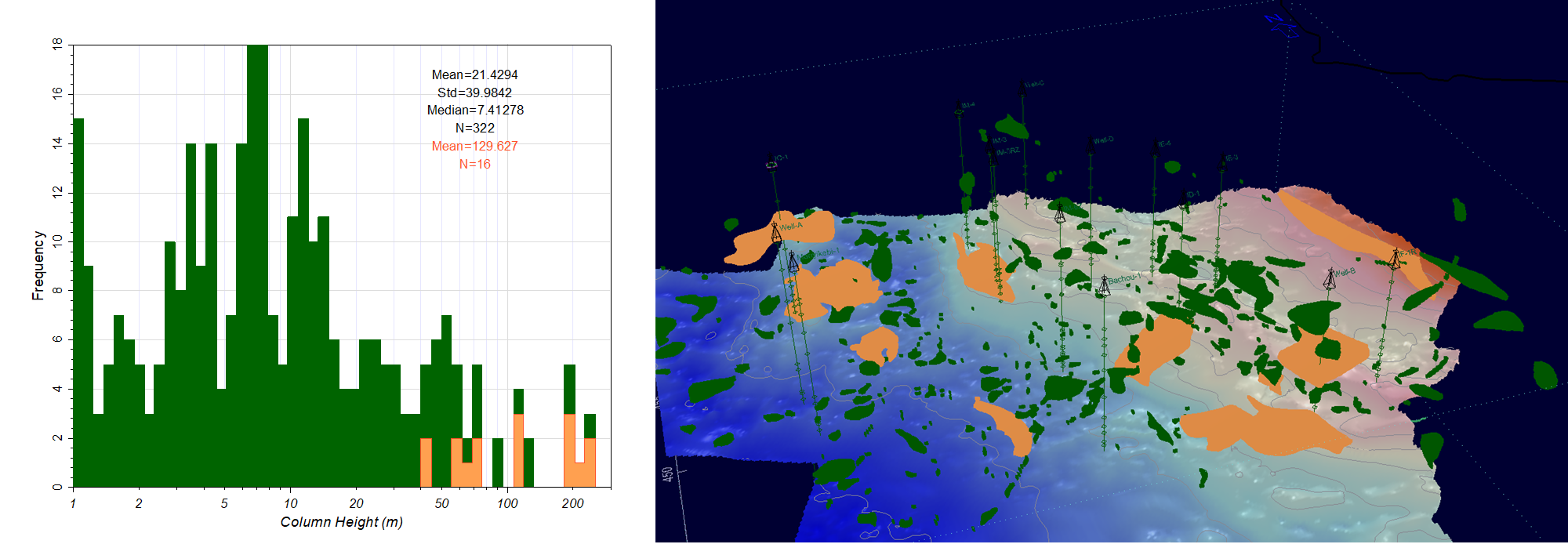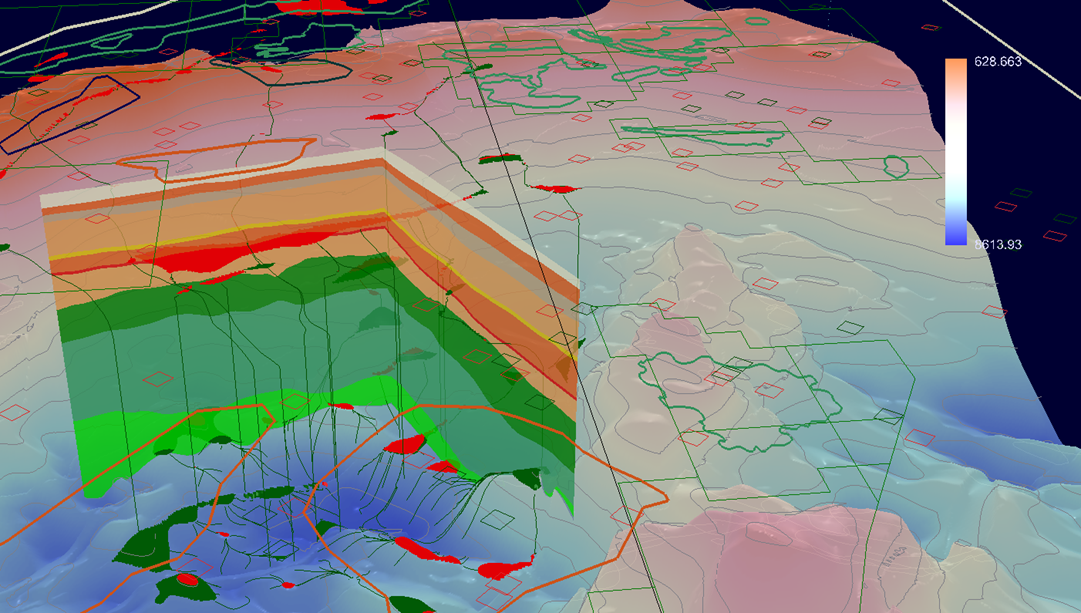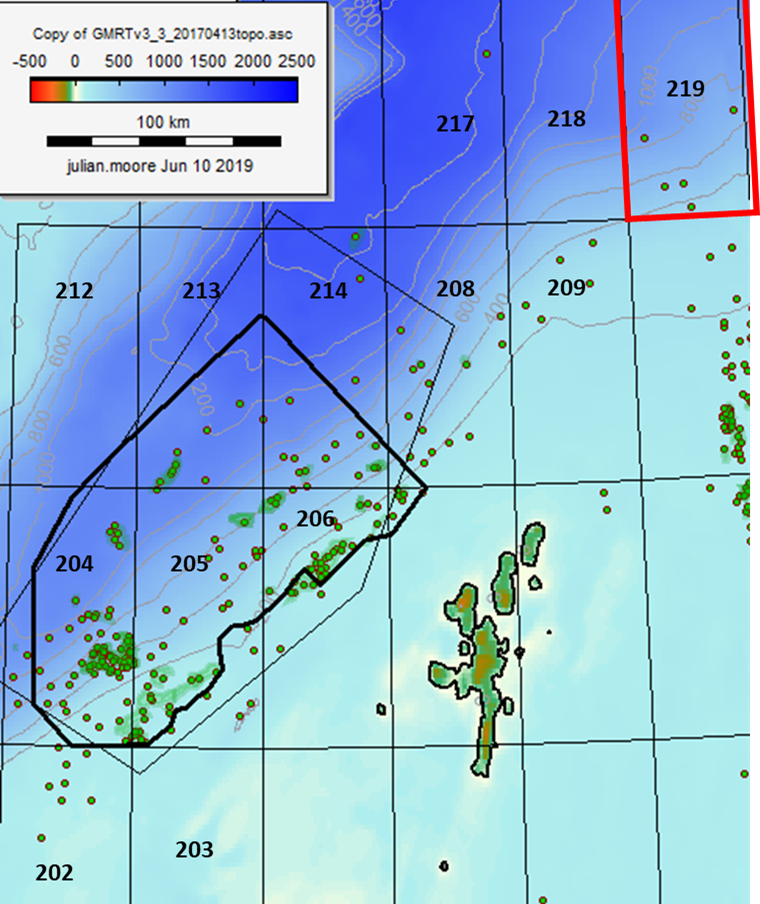3D Basin Modelling
3D visualisation and understanding of your basin
3D models are the most comprehensive models. They are based upon gridded depth structure maps, usually interpreted from seismic data, and are carefully calibrated utilising 1D models. A geological model will ideally generate some concepts for migration mechanisms from the source rock into the carrier bed.
Models can then test the timing of oil and gas generation, the timing of expulsion and migration relative to trap formation, the availability of migration conduits and the likelihood that prospects have been charged.
Estimates of the timing of migration of light hydrocarbons from gas-mature source rocks may indicate possible gas influx and oil spilling, together with modification of the accumulation’s composition and phase.

Flow path (or ray tracing) migration modelling is performed on a specific depth surface at a specific point in time, most commonly corresponding to peak generation and expulsion. This surface could be either a supplied depth map or a paleo-depth surface representing a selected carrier bed extracted from the 3D model.
Hydrocarbons are introduced ("injected") into the carrier interval, the geometry of which should be representative of the migration pathway at the time of generation and expulsion. In addition to the top surface, it is possible to include the carrier bed thickness and porosity/permeability and top–seal pressure.
Flow path analysis provides information on drainage areas, migration routes, accumulations, spill points, column heights and volumetrics. Its main advantages are simplicity and short simulation times, thereby allowing detailed sensitivity analysis.
Rapid flow path analysis based upon carrier bed geometries and properties may be used to determine drainage areas and reservoir volumetrics prior to full 3D migration modelling.


Full 3D simulation
We provide full 3D simulation of Darcy flow, flow path or, more commonly, a hybrid combination of these two methods.
Full 3D migration modelling encapsulates expulsion from the source rock into the carrier interval, modification of the carrier geometry throughout geological time, and also allows for contributions from multiple source rock intervals.
Full 3D migration is most suited to areas that are geologically very well understood, the source rock intervals are well defined and (ideally) the mode of migration via a carrier bed towards a prospect is understood, and the effects and timing of over-pressure development, fault activity etc. can be defined.
The main disadvantage of full 3D migration is that it can be computationally intense, and can involve long simulation times. APT's use of Zetaware's 3D modelling package, Trinity, enables rapid running of simulations and we are able to relatively quickly provide an overview of the region.
More information:
For more information on how APT set up and run 3D models please see our best practice documents: